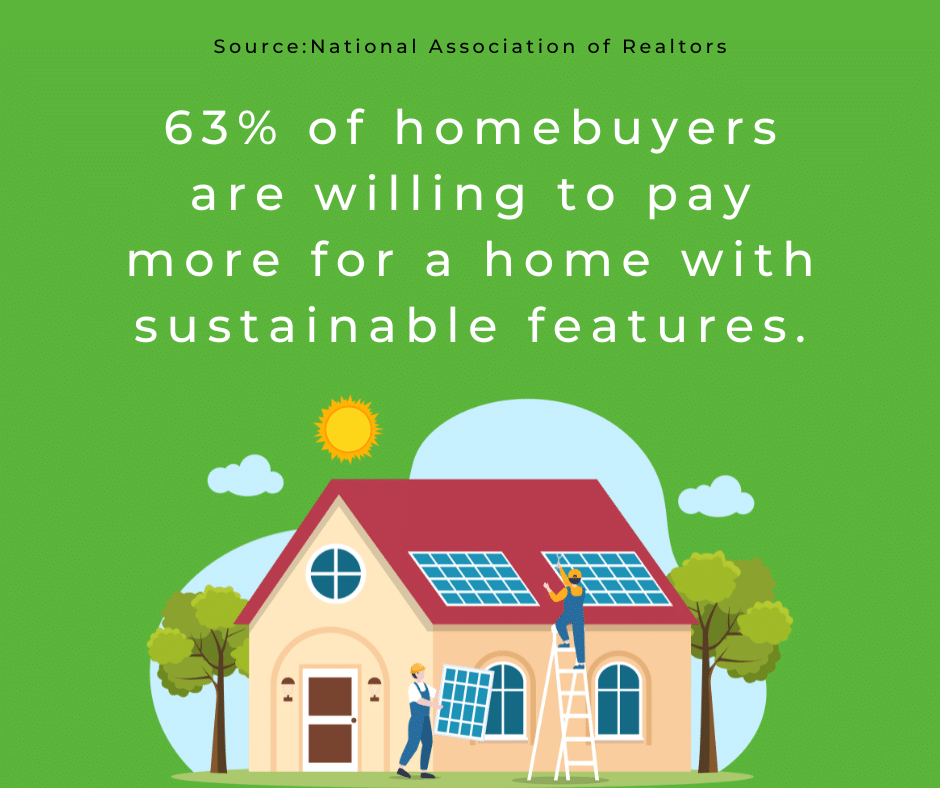More homeowners are choosing eco-friendly home renovations as they look for ways to reduce energy costs and live more sustainably. Whether you’re upgrading a fixer-upper or modernizing your forever home, these smart improvements can benefit both the environment and your wallet.
But before you start tearing down walls or adding solar panels, it’s important to plan carefully. Renovations that claim to be green aren’t always as sustainable as they seem. Let’s go over some of the best eco-friendly home renovations and how to make sure they’re done right.
Why Eco-Friendly Renovations Matter
Making your home more environmentally friendly offers more than just peace of mind. There are solid benefits that come with going green, both in the short term and the long run.
First, eco-friendly upgrades reduce your home’s reliance on energy and water. That means lower utility bills each month and less strain on your local resources. Green homes are also healthier to live in. Many materials used in sustainable renovations are non-toxic and help improve indoor air quality.
For families with children, pets, or allergies, this can make a noticeable difference.
You may also see an increase in your property’s resale value. As energy prices rise and environmental awareness grows, many buyers are looking for homes that are already equipped with green features. Features like solar panels, energy-efficient windows, or water-saving fixtures can be a major selling point.
Finally, there are financial incentives. Federal and state programs often offer rebates or tax credits for qualifying eco-friendly home renovations. Over time, your investment in sustainability can pay off in more ways than one.

Easy and Effective Green Upgrades
You don’t have to completely rebuild your home to go green. Some eco-friendly home renovations are simple, affordable, and surprisingly effective. These changes can make a big difference in energy use, water consumption, and overall home performance.
Energy-Efficient Windows and Insulation
Old, single-pane windows leak air and force your HVAC system to work overtime. Replacing them with energy-efficient double- or triple-pane options helps trap indoor temperatures and keep your energy costs down. You’ll also enjoy fewer drafts and a quieter home.
Insulation plays a huge role too. Many older homes have insufficient or outdated insulation in the attic, crawl space, or walls. Upgrading with modern, eco-friendly insulation materials—like cellulose or recycled denim—can improve your home’s efficiency without adding harmful chemicals. A home inspector can point out where you’re losing energy and recommend improvements.
Solar Panels
Solar panels have become more accessible over the last decade. Not only do they generate clean electricity, but they also reduce your dependency on utility companies. With the right setup, you could even sell unused power back to the grid.
Before installing solar panels, it’s crucial to have your roof inspected. A professional inspector will check for signs of wear, sagging, or damage. If your roof needs repair, it’s best to handle that first to avoid complications down the line. You’ll also want to ensure your home’s electrical system can support a solar setup.
Low-Flow Plumbing Fixtures
Water-saving plumbing upgrades are easy to install and often pay for themselves within a year. Look for products with the EPA’s WaterSense label. These fixtures are designed to maintain strong performance while using less water.
- Low-flow toilets can save thousands of gallons of water per year.
- Aerated faucets and showerheads maintain good pressure but cut down on usage.
- Tankless water heaters provide hot water on demand and avoid the standby energy loss of traditional tanks.
These upgrades are particularly useful in drought-prone areas or homes with older plumbing systems.
Energy Star Appliances
Appliances are a major source of energy use in most homes. If your washer, dryer, or refrigerator is over 10 years old, it’s likely guzzling power compared to modern alternatives.
Energy Star-certified appliances are designed to be more efficient. They use less electricity, require less water (in the case of dishwashers and washing machines), and may qualify for rebates. When paired with smart home systems or timers, they can help you reduce usage even further.
Sustainable Flooring Options
Flooring might not be the first thing you think about when planning eco-friendly home renovations, but it can have a big impact. Sustainable flooring materials are better for the environment and often contain fewer harmful chemicals.
Popular options include:
- Bamboo: This fast-growing plant is tough, stylish, and highly renewable.
- Cork: Naturally antimicrobial and soft underfoot, cork is harvested without damaging the tree.
- Reclaimed wood: Gives old materials new life, reducing demand for virgin lumber.
You should also pay attention to adhesives and finishes. Choose low-VOC or water-based products to minimize chemical exposure.
Non-Toxic Paints and Finishes
Painting is one of the most common renovation projects, but it can introduce harmful chemicals into your home. Many traditional paints contain VOCs (volatile organic compounds) that off-gas into the air for months after application.
Low-VOC or zero-VOC paints offer a safer alternative. They come in a wide range of colors and perform just as well as standard paints. The same goes for finishes and sealants used on cabinets, flooring, and trim. Using healthier materials during your remodel is an easy way to protect your family and the planet.
Don’t Forget the Outside

Your eco-friendly efforts don’t need to stop at the door. Outdoor upgrades can also reduce your environmental impact and lower your maintenance needs.
- Plant native species: They’re adapted to your climate, require less water, and support local wildlife.
- Install a rain barrel: Collecting rainwater for use in gardens and landscaping cuts down on water waste.
- Use permeable pavers: These allow rainwater to soak into the soil rather than running off into storm drains, helping prevent flooding and erosion.
Many homeowners overlook these simple solutions, but they’re an important part of any sustainable plan. An inspection of your grading, gutters, and yard layout can also identify problems that affect water flow and long-term drainage.
How a Home Inspector Can Help
When planning eco-friendly home renovations, a home inspector is one of your most valuable resources. They can provide a clear picture of your home’s current condition and help you prioritize upgrades that will deliver the best return on investment.
If you’re considering solar panels, your inspector can evaluate your roof’s condition and structure. This includes checking for damage, sagging, or signs that it may not support the added weight. Getting this information up front helps you avoid costly surprises during installation.
A home inspection can also reveal hidden issues that might affect your renovations, such as outdated wiring, moisture problems, or poor ventilation. These issues can reduce the efficiency of your upgrades or even create health hazards if left unaddressed.
Finally, an inspector can offer advice tailored to your home’s age, location, and layout. Whether you’re upgrading appliances, swapping out flooring, or improving air quality, their experience ensures your renovation is safe, smart, and truly eco-friendly.
Conclusion
Eco-friendly home renovations are a smart way to improve comfort, boost home value, and reduce your impact on the planet. Whether you’re installing solar panels, upgrading insulation, or switching to non-toxic materials, these changes pay off in both peace of mind and monthly savings.
Just remember – every great renovation starts with a solid foundation. A professional home inspection helps you make the best choices, avoid common mistakes, and maximize the results of your efforts. If you’re ready to take the next step toward a better home, book your home inspection today. Our team is here to help you plan smarter and build better.
